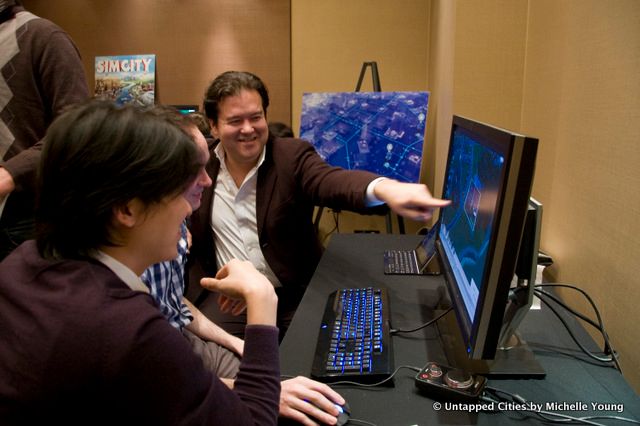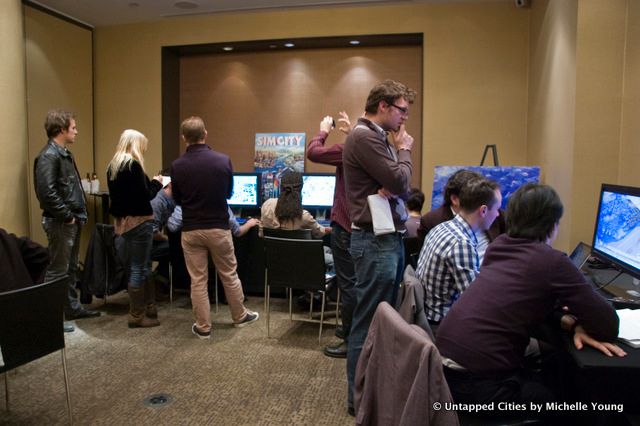Last-Minute NYC Holiday Gift Guide 🎁
We’ve created a holiday gift guide with presents for the intrepid New Yorker that should arrive just in time—

On assignment as the architecture columnist for Kill Screen, a video game and culture magazine, we attended the preview of the new SimCity at the W Hotel Times Square last month. When we arrived, a full-on urban planning competition, run by Fast Company’s Co.Exist, was going down between some impressive teams: Architecture firm KPF (currently designing Hudson Yards and many international projects), non-profit open source tech company OpenPlans, Columbia University’s Studio-X NYC team led by BldgBlog‘s Geoff Manaugh, MIT Department of Urban Studies and Planning, and Gang Studio Architects. The latter two teams were playing remotely from MIT and Chicago respectively. On hand was also the team from EA, including SimCity designer Stone Librande.
The beleaguered SimCity has suffered a dent in its reputation after a shaky launch, but beyond the server woes and consumer complaints, a jewel of digital urban planning arises. Read an excerpt from our in-depth analysis of the new SimCity from an urban planning and architectural perspective, published first on Kill Screen Magazine.
The newest advancement in SimCity is the use of GlassBox, a tool that ties effects and animation to simulation rules. You can also now build a city around a specific industry, such as casino gaming, tourism or resource extraction. This is exactly what went down at the Fast Company competiton. Studio-X built a town called Champignon around energy extraction due to the difficult topography of its location for residential development. OpenPlans crowd-sourced its decisions and went for a green town with happy and wealthy residents (thank to the largest coal reserve in the region). FastCompany was creating a wind-powered Vegas. KPF thought comprehensively, creating Ximcity, one of the more complex, extensive cities on the map and sketching out designs on an iPad.

Tweeting between the teams provided some insights, with @MITdusp writing, “Never thought we’d see #urbanplanning @simcity twitter trash talk!” OpenPlans asked its Twitter followers, “Help! Questions for the crowd: specialize in culture or trade? go big or stay small and happy? Competitive #simcity bit.ly/XC3kR3.” You could tweet at OpenPlans or the URL provided led to a Google doc where you could add comments. Team Studio-X was “determined to win SimCity, even if we have to redefine successful urbanism to do so…”

Greg Lindsay of Fast Company, who was overseeing the game, lamented halfway through that no team had built an airport. The final call on who “won,” was deliberately left vague, but a hint comes from a tweet from OpenPlans‘ Frank Hebbert: “All partisan trash talk aside, I was proud to see @MITdusp produce the best city.”
Read more from our in-depth analysis of SimCity from an urban planning perspective on Kill Screen Magazine. Get in touch with the author @untappedmich.
Subscribe to our newsletter